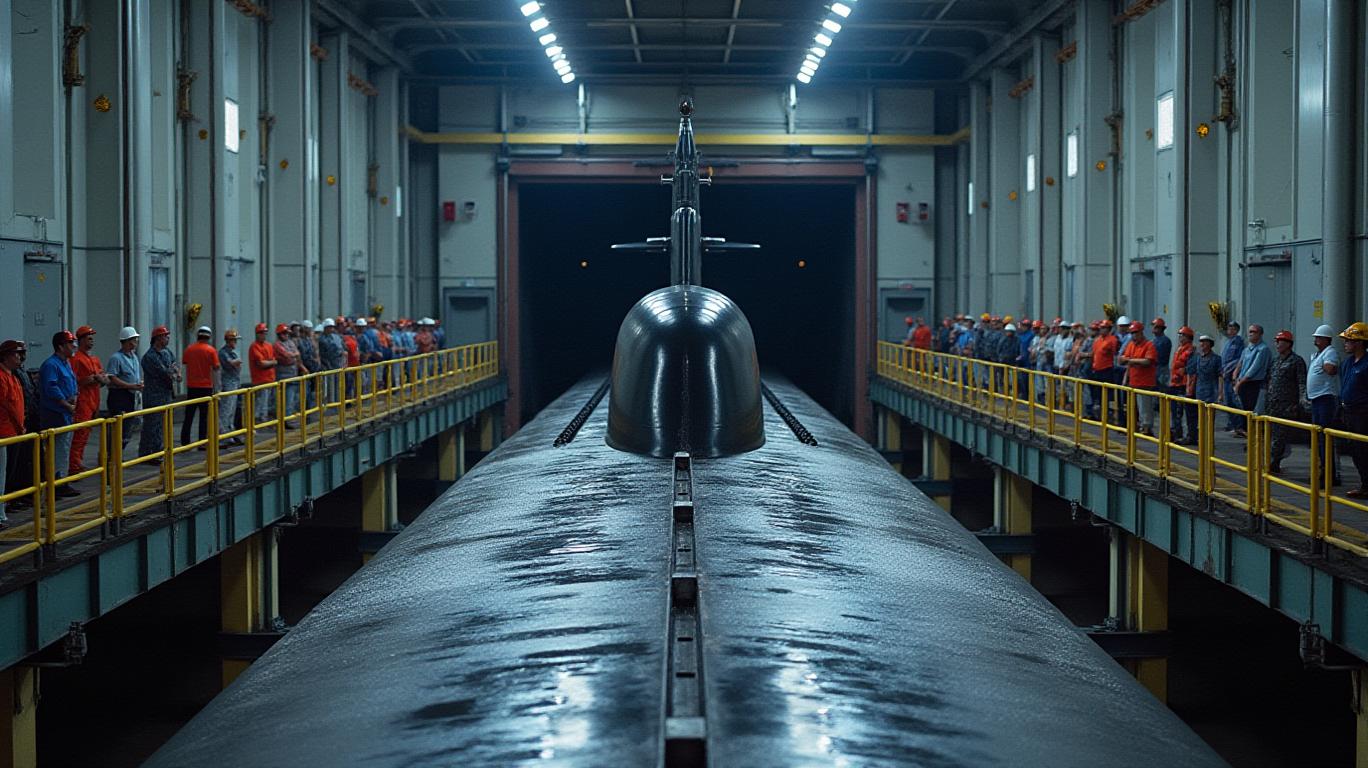General Dynamics: Navigating UAW Contract Headwinds to Unlock Long-Term Value

The recent ratification of the United Auto Workers (UAW) contract at
(GD) has sparked concerns about near-term cost pressures. However, a deeper analysis reveals that the agreement positions GD to capitalize on long-term strategic advantages in a defense sector primed for growth. While the immediate financial impact of wage increases and benefits enhancements is undeniable, the contract's terms—when viewed through the lens of operational stability, workforce retention, and government demand—paint a compelling picture of sustained value creation for investors.Near-Term Cost Pressures: A Necessary Trade-Off
The UAW contract, ratified in 2023 after contentious negotiations, delivers immediate and multiyear wage hikes for workers at GD's Electric Boat subsidiary and other facilities. Key terms include a 14% upfront raise, a 30% cumulative increase over five years, and inflation protections, alongside improvements to healthcare and pension plans. These provisions, combined with rejected demands for extreme healthcare cost hikes, will pressure near-term margins.
Yet these costs are not unmanageable. GD's $13 billion in cumulative profits over three years (2021–2024) provide a robust financial cushion. Moreover, the contract eliminates the costly “two-tiered” pay system, reducing retention risks and boosting productivity. The $2,750 retirement supplement for long-serving employees further stabilizes the workforce, critical for complex projects like submarine construction.
Strategic Advantages: Stability in a High-Stakes Industry
The UAW deal's most significant long-term benefit is operational certainty. By averting strikes at Electric Boat—a key supplier of nuclear submarines—the contract ensures uninterrupted production of vessels vital to U.S. national security. This stability is particularly critical as GD executes its $12.4 billion federal submarine construction program, funded through 2025.
The agreement also aligns with rising defense spending. With the Pentagon prioritizing modernization and the Navy's goal of 500 ships by 2035, GD's dominance in naval systems positions it to secure future contracts. Its role in the Columbia-class ballistic missile submarine program, for instance, guarantees decades of recurring revenue.
Valuation Upside: A Discounted Leader in Growth Markets
Despite short-term margin compression, GD's valuation remains compelling. At a P/E ratio of 14x forward earnings, it trades at a discount to peers like LMT (16x) and RTX (18x), even as its backlog and recurring revenue streams are among the strongest in the sector.
The multiyear wage increases, while initially costly, offer predictability. By 2027, GD's labor costs will stabilize at higher but manageable levels, while productivity gains and scale efficiencies—driven by streamlined pay structures—should offset some pressures.
Furthermore, the $115,000 average compensation increase per worker (for Electric Boat's Marine Draftsmen's Association) signals a commitment to retaining skilled labor, a strategic asset in a tight labor market. This reduces the risk of costly delays, such as those plaguing GD's Columbia-class program in 2023 due to staffing shortages.
The Investment Case: A Strategic Buy Amid Sector Tailwinds
GD's stock has underperformed the S&P 500 since 2021, a gap that investors can exploit. With the UAW contract now resolved and the defense budget set to grow at 4–6% annually, GD is poised to deliver earnings upside. Key catalysts include:
1. Submarine program execution: Deliveries of the Virginia-class and Columbia-class subs will drive revenue through 2030+.
2. Federal funding certainty: The 2025 budget allocates record sums for naval modernization.
3. Margin recovery: By 2026, GD's adjusted margins could rebound to 8–10% as cost pressures ease.
Conclusion: A Strategic Play for Patient Investors
While the UAW contract introduces near-term headwinds, they are outweighed by GD's long-term strategic strengths. The company's irreplaceable role in national security, coupled with a resolved labor landscape and a booming defense market, positions it to deliver superior returns. At current valuations, GD is a contrarian buy for investors willing to look beyond short-term noise—a chance to invest in a pillar of U.S. defense infrastructure at a discount.
The path forward is clear: GD's ability to balance worker needs with national priorities ensures it remains a leader in an industry with decades of growth ahead. Act now before the market catches up.

Comments
No comments yet